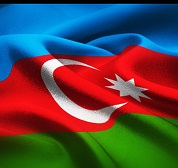In the Islamic Republic of Iran, the Constitution formally recognizes certain linguistic and cultural rights, yet the practical implementation of these rights often faces significant obstacles. A striking example is Article 15 of the Iranian Constitution, which declares Persian as the official language of the country while simultaneously permitting the use of local and ethnic languages in media and education. On paper, this seems like a progressive approach to cultural diversity, allowing various ethnic groups—such as Kurds, Azeris, Arabs, Baluchis, and others—to maintain and develop their linguistic heritage alongside the national language.
However, the reality is far more complex. Despite the clear legal framework, the execution of Article 15 has been limited, inconsistent, and, in some cases, actively suppressed. Local languages are rarely incorporated systematically into school curricula, and media outlets using these languages often face bureaucratic obstacles. Efforts to publish books, teach literature, or organize cultural programs in minority languages are often subject to strict state scrutiny, reflecting a tension between constitutional rights and the state’s perception of national security and unity.
This situation embodies what scholars call a political paradox: a law may formally grant rights, yet the same law exists within a political environment where its exercise is constrained. In the Iranian context, the paradox is clear—the Constitution recognizes linguistic diversity, but the political and security apparatus often treats its practical exercise as a potential threat. This tension is not merely theoretical. Teachers, writers, and cultural activists advocating minority language education often encounter administrative barriers, censorship, or other forms of restriction. Consequently, a right that is legal on paper is not always a right in practice.
The roots of this paradox lie in the dual imperatives of the state. On one hand, Iran’s government presents itself as a guarantor of cultural diversity and minority rights. On the other hand, the same government places strong emphasis on national unity and political stability, sometimes interpreting minority language activism as a challenge to these goals. This creates an implementation gap: policies and laws exist, but the political context limits their application. The result is a persistent tension between the principle of rights and the practice of governance, which defines the paradox.
From a broader perspective, this paradox has significant social and cultural consequences. The inability to fully exercise linguistic rights can contribute to feelings of marginalization among minority communities, undermining trust in national institutions. It also limits the intergenerational transmission of local languages, potentially endangering the survival of some linguistic traditions. Scholars of political science and human rights often highlight this as a common challenge in states where centralized authority and security concerns dominate over local cultural autonomy.
Despite these challenges, there have been some incremental advances. In certain regions, minority languages are used in local media or cultural events, and some schools offer elective courses in regional languages. Yet, these measures remain fragmented, highlighting the inconsistency between the constitutional promise and the lived reality. The ongoing discrepancy fuels debates among academics, journalists, and activists about how Iran can reconcile its constitutional commitments with its political and security priorities.
In conclusion, the case of linguistic rights in Iran exemplifies a broader phenomenon known as a political paradox. While the Constitution formally guarantees certain freedoms, including the use of local and ethnic languages, practical constraints, political considerations, and security concerns often limit their realization.
Article 15 embodies both the promise of cultural pluralism and the challenges of implementing it in a centralized political system. For observers and advocates, the key question remains: how can a state reconcile legal recognition of diversity with political structures that prioritize uniformity and control? Understanding this paradox is essential for analyzing not only Iran’s linguistic policies but also broader tensions between law, rights, and politics in contemporary states.
